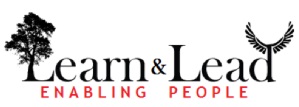Ray Sims recent blog post about motivation for technology adoption by end-users came in at an opportune time for me. Having blogged on my own for a while, I am now embarking on the journey of experiments. Inspired by the Bamboo Project, and challenged by the job of enhancing skills of a diverse and divergent (in more ways than one) large team of instructional designers and content developers, I have decided to experiment using Web 2.0 tools to bring in some convergence. And I need suggestions to make this succeed.
We’ve had a Web 2.0 equivalent environment “within the firewall” for many years now. Many of the tools have been available on our employee portal – discussion forums, blogs, wikis, project sites, knowledge base with new additions and frequently used tags, chat, survey questions, and even image galleries. We can argue and debate about semantics of whether these tools are indeed Web 2.0 tools, however the tools facilitated collaboration. We have had success in using these tools in pockets. Given our expectations of convergence I would say the success of this environment has been limited.
So why bother with creating a new collaborative learning environment “outside the firewall”? Well for one, the tools available outside the firewall seem to be a lot more user-friendly, and customizable. And I have more control over creating new environments without having to go to our systems and IT team. This in spite of my having significant influence over this team.
So in my current experiment, I have:
– Set up a collaborative blog on Blogger.
– Invited specific people to be authors to this blog.
– Identified a list of topics that I want the team to write on.
– Posted a few posts of my own and from a team member.
– Created a Flickr group to share photos on the blog.
– Made a very quiet launch of the blog with limited readership.
– Provided a link to the blog on our employee portal.
Issues I am still pondering over:
- While blogs provide an informal forum for the team to write about their project and issues they are facing, I am uncomfortable about the “outside the firewall” bit in this particular case. It is always more comfortable for discussions about current project and issues to be held internally, or within the firewall. I could use blogger’s administrative features to restrict access but that is an administrative nightmare for me.
- My role would require me to create guidelines/policies for professionals writing outside the firewall. I am torn between being an experimenter and being a manager. Are there pointers to create these policies and guidelines?
- Wouldn’t putting firewall around this informal learning environment itself defeat the purpose of having an informal collaborative environment? Are there case studies of implementing something like this successfully for large teams?
- Since most of the past initiatives have been pushed to the team, I want to make this one a pull initiative. What’s the best way to roll this out to get an active pull enrollment of the team?


Hi Manish,
Thanks for the link.
On the question of blogging policy, Toby Ward has a good summary post at: Blogging policy examples
Ray
Manish,
I have some thoughts posted here around possible scenarios of using PLEs.
Viplav